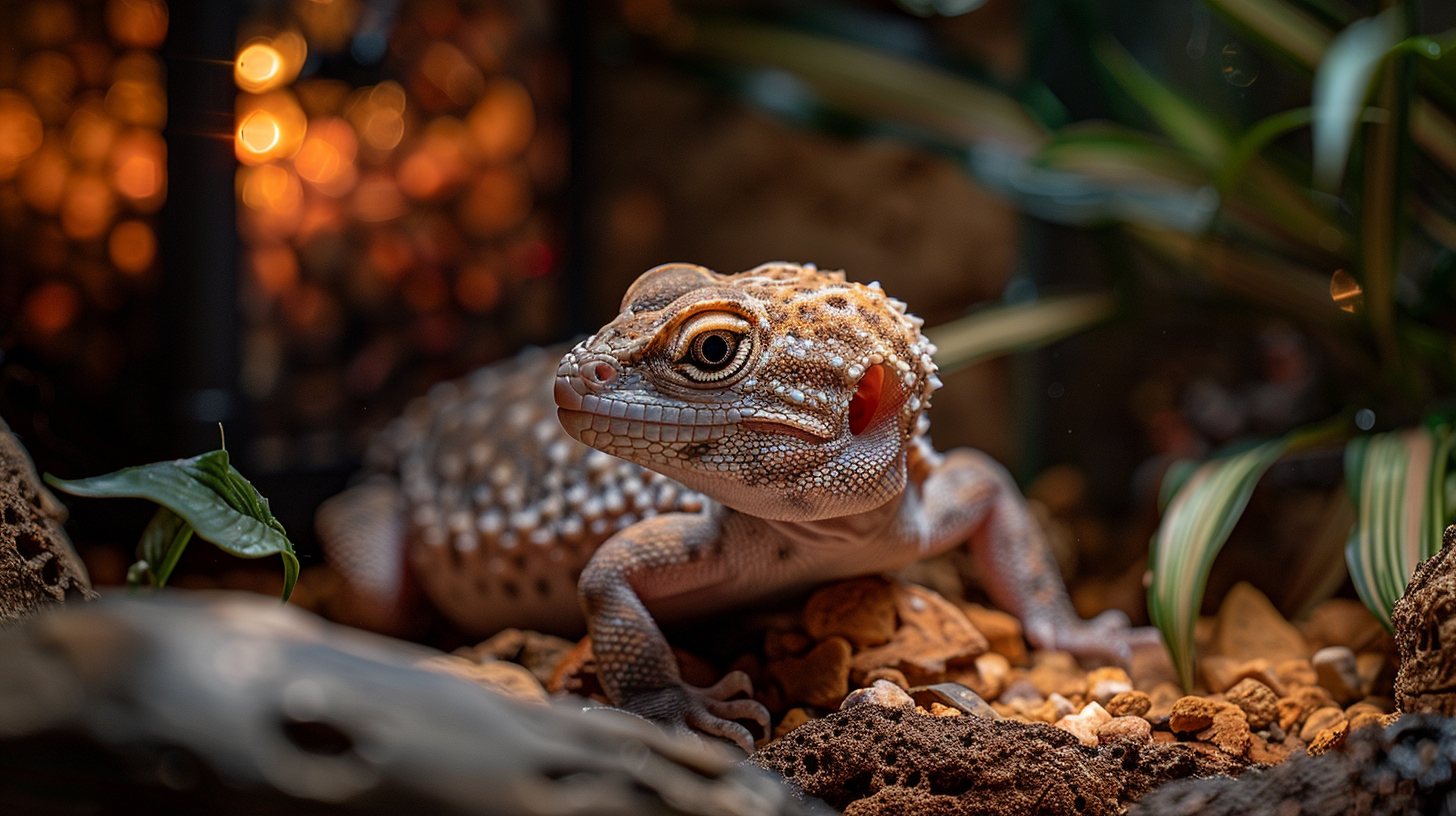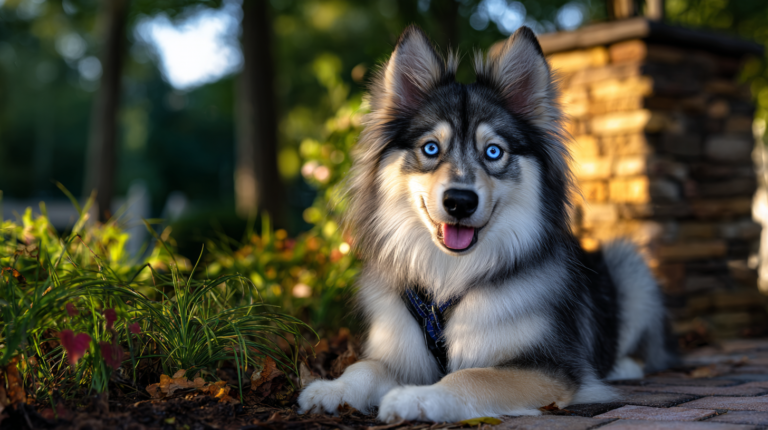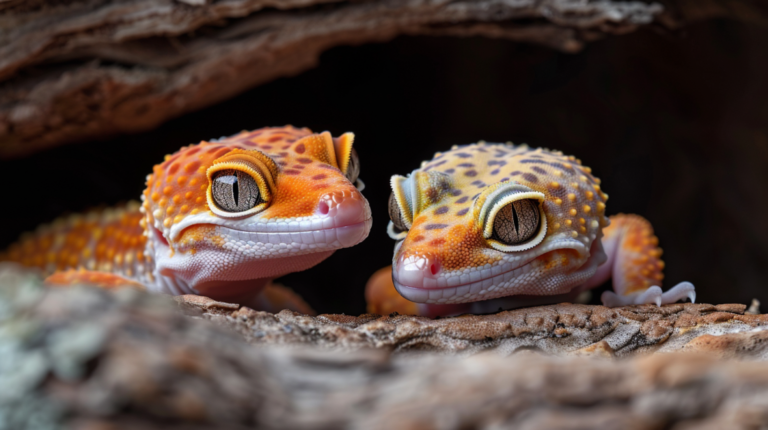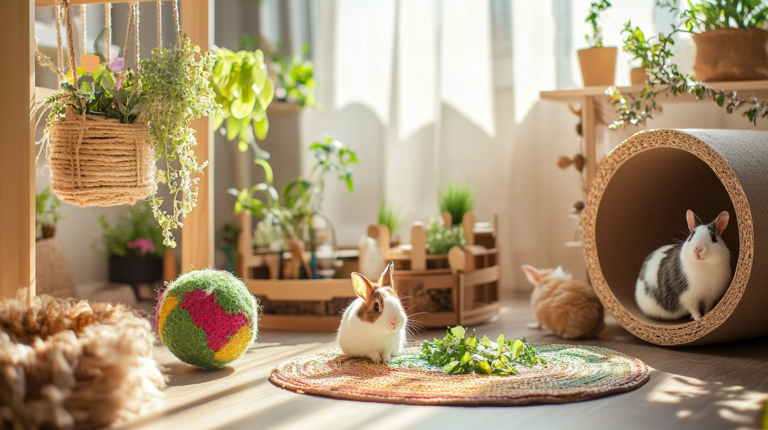Discover essential Ackie Monitor Lizard care tips from feeding to habitat setup. Expert advice for healthy, happy monitor lizards. Complete beginner’s guide with proven strategies.
Table of Contents
Did you know that Ackie Monitor Lizards can live up to 20 years with proper care, making them one of the most rewarding reptilian companions for dedicated pet owners? These fascinating Australian natives, scientifically known as Varanus acanthurus, have captured the hearts of reptile enthusiasts worldwide with their intelligence, manageable size, and engaging personalities.
The Ackie Monitor Lizard represents the perfect entry point into monitor keeping for both novice and experienced reptile owners. Unlike their larger cousins, these compact monitors typically reach only 24-30 inches in total length, making them ideal for home environments while still displaying the complex behaviors that make monitors so captivating.
When I first encountered an Ackie Monitor Lizard at a reptile expo in Phoenix three years ago, I was immediately struck by their alert, almost dog-like awareness. The breeder explained how these intelligent creatures recognize their owners and can even be trained to respond to their names – something I initially found hard to believe until I witnessed it firsthand.
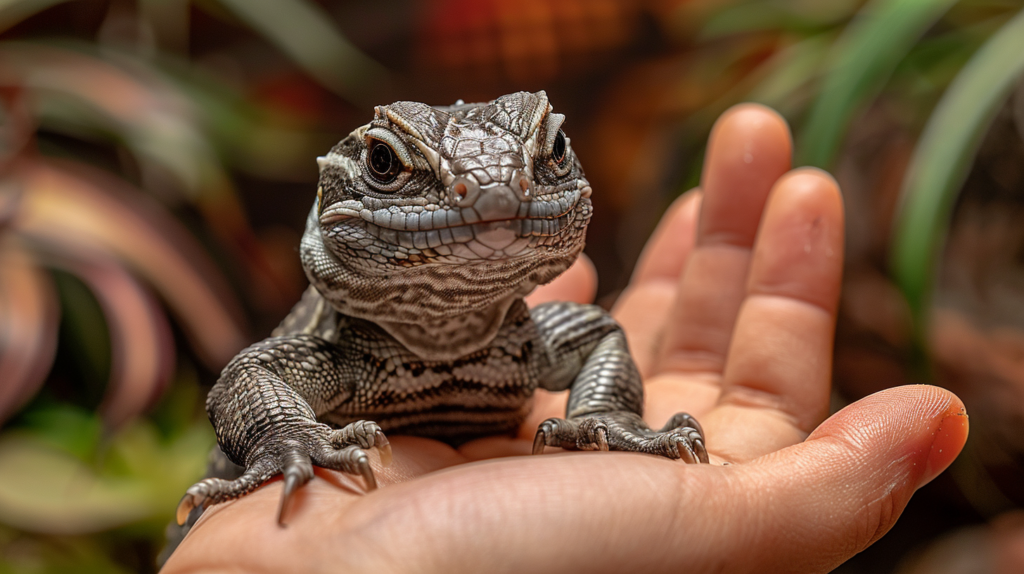
Understanding proper Ackie Monitor Lizard care is crucial for ensuring these remarkable reptiles thrive in captivity. From creating the perfect thermal gradient to providing species-appropriate nutrition, every aspect of their husbandry requires careful attention to detail. This comprehensive guide will walk you through eight essential care tips that will help you provide the best possible life for your Ackie Monitor Lizard.
1. Setting Up the Perfect Ackie Monitor Lizard Habitat
Creating an appropriate habitat is the foundation of successful Ackie Monitor Lizard care. These active, semi-arboreal lizards require spacious enclosures that accommodate their natural behaviors and provide essential environmental gradients.
Enclosure Size Requirements
Adult Ackie Monitor Lizards need substantial space to thrive. The minimum enclosure size should be 6 feet long, 3 feet wide, and 4 feet tall for a single adult. However, larger is always better when it comes to monitor housing. A 8x4x4 foot enclosure provides excellent space for natural behaviors and reduces stress significantly.
Juvenile Ackie Monitor Lizards can start in smaller enclosures (40-gallon breeder tanks), but they grow quickly and will need upgrades within their first year. Planning for adult housing from the beginning often proves more cost-effective and less stressful for both owner and animal.
Substrate Selection and Setup
Proper substrate choice directly impacts your Ackie Monitor Lizard’s health and natural behaviors. These lizards are natural diggers, so providing an appropriate substrate depth of 6-8 inches allows for essential burrowing behaviors.
The best substrate options include:
- Cypress mulch mixed with play sand (70/30 ratio)
- Organic topsoil and sand mixture (60/40 ratio)
- Coconut fiber and sand blend (50/50 ratio)
Avoid cedar or pine shavings, which contain aromatic oils harmful to reptiles. The substrate should hold burrows well while maintaining proper humidity levels throughout the enclosure.
Essential Habitat Features
Ackie Monitor Lizards require multiple hiding spots, basking areas, and climbing opportunities. Provide at least three hide boxes: one on the warm side, one on the cool side, and one in the middle gradient zone. Cork bark rounds, hollow logs, and rock caves work excellently.
Climbing branches should be sturdy enough to support your monitor’s weight. Manzanita branches, cork bark flats, and artificial rock ledges create vertical space utilization. Position branches to create multiple basking spots at different heights and temperatures.
2. Mastering Temperature and Lighting Requirements
Proper thermal regulation is absolutely critical for Ackie Monitor Lizard health. These ectothermic reptiles depend entirely on external heat sources to regulate their body temperature and maintain essential physiological functions.
Creating the Perfect Temperature Gradient
Ackie Monitor Lizards require a distinct temperature gradient across their enclosure. The basking spot should reach 140-150°F surface temperature, measured with an infrared temperature gun. The ambient temperature on the warm side should maintain 95-100°F, while the cool side should remain between 78-85°F.
Nighttime temperatures can drop to 70-75°F, providing a natural cooling period that promotes healthy circadian rhythms. This temperature drop also encourages natural behaviors and prevents metabolic stress associated with constant high temperatures.
Heating Equipment and Safety
Halogen flood lights provide excellent basking heat and natural color spectrum. Use 75-100 watt halogen bulbs positioned 12-18 inches above the basking spot. Always use protective guards to prevent burns if your monitor climbs near the fixtures.
Ceramic heat emitters (CHEs) provide supplemental heating without light production, making them ideal for maintaining nighttime temperatures in cooler climates. Under-tank heaters should only provide gentle belly heat and never serve as primary heat sources for monitors.
UVB Lighting Essentials
Despite being primarily crepuscular, Ackie Monitor Lizards benefit significantly from UVB exposure. Provide UVB lighting using T5 HO 10.0 or 12% UVB bulbs, depending on the distance from basking spots.
Position UVB fixtures 12-18 inches from primary basking areas and replace bulbs every 6-12 months, even if they still produce visible light. UVB meters help ensure proper output levels and timing for replacements.
Markdown Version:
| Zone | Daytime Temperature | Nighttime Temperature | Measurement Method |
|---|---|---|---|
| Basking Spot | 140-150°F | N/A | Infrared thermometer |
| Warm Side Ambient | 95-100°F | 75-80°F | Digital thermometer |
| Cool Side Ambient | 78-85°F | 70-75°F | Digital thermometer |
| Substrate Surface (Warm) | 90-95°F | 75-80°F | Probe thermometer |
| Substrate Surface (Cool) | 75-80°F | 70-75°F | Probe thermometer |
3. Nutrition and Feeding Guidelines for Optimal Health
Proper nutrition forms the cornerstone of Ackie Monitor Lizard health and longevity. These opportunistic predators require a varied diet that closely mimics their natural feeding patterns while providing complete nutritional balance.
Understanding Natural Feeding Behaviors
In the wild, Ackie Monitor Lizards are primarily insectivorous, consuming a wide variety of arthropods, small vertebrates, and occasionally eggs. Their high metabolism requires frequent feeding, especially during growth phases and breeding seasons.
Juvenile Ackie Monitor Lizards should eat daily, while adults can be fed every other day or three times per week. The key is providing appropriately sized prey items – nothing longer than the space between your monitor’s eyes.
Primary Food Sources and Varieties
The foundation of an Ackie Monitor Lizard diet should consist of various feeder insects. Crickets, dubia roaches, mealworms, superworms, and waxworms provide excellent nutritional variety. Rotate between different insects to prevent nutritional deficiencies and maintain feeding interest.
Whole prey items like pinkie mice, quail chicks, and day-old chicks can be offered to adults 1-2 times per month. These items provide natural calcium from bones and additional nutrients often missing from insect-only diets.
Supplementation and Gut-Loading
All feeder insects should be gut-loaded 24-48 hours before feeding. Use high-quality gut-loading diets containing vegetables, grains, and commercial gut-loading products. This process significantly improves the nutritional value of feeder insects.
Dust insects with calcium powder every feeding for juveniles and every other feeding for adults. Use calcium with D3 once per week if providing UVB lighting, or twice per week without UVB. Multivitamin supplementation should occur once per week for optimal health.
Common Feeding Mistakes to Avoid
Never feed wild-caught insects, which may carry parasites or pesticide residues. Avoid feeding only one type of insect, as this leads to nutritional imbalances over time. Overfeeding is a common problem – monitor your Ackie’s body condition and adjust portions accordingly.
Large prey items can cause impaction or regurgitation. When in doubt, choose smaller prey and feed more frequently rather than risking oversized meals.
4. Humidity Control and Environmental Balance
Maintaining proper humidity levels is crucial for Ackie Monitor Lizard respiratory health, shedding success, and overall well-being. These semi-arid adapted lizards require moderate humidity with specific microclimates for optimal health.
Optimal Humidity Ranges
Ackie Monitor Lizards thrive with overall humidity levels between 40-60%. However, providing humidity gradients within the enclosure better meets their physiological needs. The basking area should maintain lower humidity (35-45%), while the cool side can have slightly higher levels (50-65%).
A humid hide containing moist sphagnum moss provides a microclimate reaching 70-80% humidity. This essential feature supports proper shedding and allows your monitor to self-regulate moisture exposure as needed.
Monitoring and Measurement
Use digital hygrometers placed on both warm and cool sides of the enclosure to monitor humidity accurately. Cheap analog gauges often provide inaccurate readings and should be avoided for reptile keeping.
Check humidity levels daily and maintain detailed records, especially during seasonal changes when ambient humidity fluctuates significantly. Consistent monitoring prevents both dehydration and respiratory infections associated with improper humidity.
Humidity Management Techniques
Large water bowls provide passive humidity while serving as drinking sources. Position water features on the cool side to prevent excessive evaporation and humidity spikes near heating elements.
Misting systems can supplement humidity, but avoid over-misting that creates stagnant, humid conditions. Light morning misting that dries within 2-3 hours mimics natural dew patterns and provides drinking opportunities.
Proper ventilation prevents stagnant air while maintaining humidity. Use screen tops with partial covering or ventilation fans to ensure adequate air circulation without excessive moisture loss.
Markdown Version:
| Age Group | Feeding Frequency | Prey Size | Primary Foods | Supplements |
|---|---|---|---|---|
| Hatchling (0-6 months) | Daily | 1/4 inch | Pinhead crickets, fruit flies | Calcium daily, vitamins 2x/week |
| Juvenile (6-18 months) | Daily | 1/2 inch | Crickets, small roaches | Calcium daily, vitamins weekly |
| Sub-adult (18-24 months) | Every other day | 3/4 inch | Crickets, roaches, mealworms | Calcium every feeding, vitamins weekly |
| Adult (2+ years) | 3 times per week | 1 inch | All insects, occasional mice | Calcium every other feeding, vitamins weekly |
5. Health Monitoring and Veterinary Care
Regular health monitoring ensures early detection of potential problems and maintains your Ackie Monitor Lizard’s optimal well-being. These intelligent reptiles can hide illness symptoms, making consistent observation crucial for their long-term health.
Daily Health Assessment
Observe your Ackie Monitor Lizard’s behavior, appetite, and physical condition daily. Healthy monitors are alert, responsive, and show consistent feeding behaviors. Note any changes in activity levels, basking patterns, or social interactions.
Check for clear, bright eyes without discharge or swelling. The mouth should be free of excess saliva, unusual coloration, or mouth rot symptoms. Breathing should be quiet and regular – avoid any wheezing or open-mouth breathing except during active periods.
Common Health Issues and Warning Signs
Respiratory infections are among the most common health problems in captive monitors. Symptoms include mouth breathing, wheezing, nasal discharge, and lethargy. These conditions often result from improper humidity or temperature gradients.
Parasites, both internal and external, can significantly impact health. Watch for unusual weight loss, changes in appetite, abnormal feces, or visible mites. Regular fecal examinations by an exotic veterinarian help detect parasites before they become serious problems.
Metabolic bone disease affects monitors fed inadequate diets or lacking proper UVB exposure. Signs include soft jaw bones, kinked tails, lethargy, and difficulty moving normally. This preventable condition requires immediate veterinary intervention.
When to Seek Professional Veterinary Care
Establish a relationship with an exotic veterinarian experienced in monitor care before health issues arise. Schedule annual wellness examinations to establish baseline health parameters and catch problems early.
Seek immediate veterinary attention for any respiratory symptoms, prolonged appetite loss, unusual lethargy, or visible injuries. Don’t wait for conditions to worsen – early intervention significantly improves treatment outcomes for reptiles.
For more expert pet care tips and product recommendations, visit BlithePet.com your trusted source for pet wellness.
6. Handling and Socialization Techniques
Proper handling techniques and gradual socialization create positive relationships between Ackie Monitor Lizards and their owners. These intelligent reptiles can become remarkably tame with consistent, respectful interaction approaches.
Building Trust and Recognition
Start socialization slowly with young monitors, allowing them to adjust to their new environment for 1-2 weeks before attempting handling. Spend time near the enclosure, talking softly and moving slowly to help your monitor recognize you as non-threatening.
Hand-feeding creates positive associations and builds trust effectively. Offer food items with feeding tongs initially, gradually transitioning to hand-feeding as your monitor becomes more comfortable with your presence.
Safe Handling Procedures
Always support your Ackie Monitor Lizard’s body properly during handling. Use one hand to support the front legs and chest while the other supports the rear legs and tail base. Never grab only the tail or allow the full weight to hang unsupported.
Start with short handling sessions (5-10 minutes) and gradually increase duration as your monitor becomes more comfortable. Watch for stress signs like rapid breathing, thrashing, or defecation, and return the animal to its enclosure if these occur.
Recognizing Stress and Comfort Signals
Relaxed Ackie Monitor Lizards will have normal coloration, calm breathing, and may even close their eyes during gentle handling. They might explore with their tongues and show curiosity about their surroundings when comfortable.
Stressed monitors display darker coloration, rapid breathing, attempts to escape, and may inflate their bodies or gape their mouths. Tail thrashing and defecation are clear stress signals requiring immediate return to the enclosure.
Advanced Interaction and Enrichment
Well-socialized Ackie Monitor Lizards can learn to recognize their names and respond to visual cues. Some individuals enjoy supervised exploration outside their enclosures in secure, monitor-proofed rooms.
Provide mental stimulation through varied feeding methods, puzzle feeders, and environmental changes. Rotating hide boxes, adding new climbing structures, or rearranging enclosure layouts provides enrichment and prevents boredom.
7. Breeding Considerations and Lifecycle Management
Understanding Ackie Monitor Lizard reproduction and lifecycle management helps owners provide appropriate care throughout different life stages and make informed decisions about breeding projects.
Sexual Maturity and Breeding Preparation
Ackie Monitor Lizards typically reach sexual maturity between 18-24 months of age, though some individuals may mature slightly earlier or later. Males generally develop broader heads and more pronounced jowls compared to females of similar age.
Successful breeding requires proper conditioning through temperature cycling, varied nutrition, and appropriate seasonal light cycles. Provide a cooling period during winter months, reducing temperatures by 5-10 degrees for 6-8 weeks to simulate natural seasonal changes.
Egg-Laying and Incubation Requirements
Female Ackie Monitor Lizards require appropriate nesting sites for successful reproduction. Provide deep substrate areas (12+ inches) or dedicated nest boxes filled with slightly moist sand and soil mixture for egg deposition.
Eggs require controlled incubation at 84-86°F with humidity levels around 80-90%. Incubation periods typically range from 165-200 days, depending on temperature and individual genetics. Maintain detailed records of all breeding activities for future reference.
Caring for Hatchlings
Newly hatched Ackie Monitor Lizards require specialized care with smaller prey items, higher feeding frequencies, and carefully controlled environmental conditions. House hatchlings individually to prevent competition and monitor growth rates accurately.
Provide multiple small hiding spots, shallow water dishes, and UVB lighting appropriate for their smaller size. Begin gentle socialization early, as young monitors typically tame more easily than adults acquired later in life.
Markdown Version:
| Health Issue | Symptoms | Common Causes | Prevention | Treatment |
|---|---|---|---|---|
| Respiratory Infection | Mouth breathing, wheezing, discharge | Low temperatures, high humidity, stress | Proper temperatures, good ventilation | Veterinary antibiotics, environmental correction |
| Parasites | Weight loss, poor appetite, abnormal feces | Wild-caught feeders, poor hygiene | Quarantine, fecal testing, clean insects | Antiparasitic medications, environmental cleaning |
| Metabolic Bone Disease | Soft bones, lethargy, deformities | Poor diet, lack of UVB, insufficient calcium | Proper supplementation, UVB lighting | Veterinary treatment, dietary correction |
| Impaction | No defecation, lethargy, loss of appetite | Oversized prey, inappropriate substrate | Proper prey sizing, safe substrates | Veterinary intervention, possible surgery |
| Dehydration | Wrinkled skin, sunken eyes, lethargy | Low humidity, no water access | Adequate humidity, fresh water availability | Fluid therapy, environmental correction |
8. Advanced Care Tips and Common Mistakes
Mastering advanced Ackie Monitor Lizard care involves understanding subtle behavioral cues, preventing common husbandry mistakes, and providing enrichment that promotes natural behaviors and mental stimulation.
Environmental Enrichment Strategies
Create dynamic environments that change periodically to prevent boredom and encourage natural behaviors. Rotate climbing structures, hide boxes, and substrate textures monthly to maintain interest and provide mental stimulation.
Implement feeding enrichment through puzzle feeders, buried food items, and varied feeding locations. This encourages natural foraging behaviors and provides physical exercise that benefits overall health and muscle tone.
Seasonal environmental changes mimic natural conditions and promote natural behavioral cycles. Adjust photoperiods, temperatures, and humidity slightly throughout the year to encourage natural rhythms and potential breeding behaviors.
Avoiding Critical Husbandry Mistakes
One of the most common mistakes is inadequate enclosure size relative to the monitor’s activity level. Ackie Monitor Lizards are remarkably active and require substantially more space than many other reptiles of similar size.
Temperature gradients are often insufficient in smaller enclosures or those with inadequate heating systems. Ensure your monitor can access a full range of temperatures throughout the enclosure for proper thermoregulation.
Overhandling young or stressed monitors can cause long-term behavioral problems and health issues. Allow adequate adjustment periods and watch for stress signals during all interactions.
Myth-Busting Common Misconceptions
Myth: Ackie Monitor Lizards only need basic heating like other lizards. Reality: These active monitors require intense basking spots (140-150°F) that many other reptiles would find excessive. Their high metabolism demands access to very hot temperatures for proper digestion.
Myth: Monitors are too aggressive for safe handling. Reality: Well-socialized Ackie Monitor Lizards can become remarkably tame and even enjoy human interaction. Proper socialization techniques and patient handling create docile, interactive pets.
Myth: UVB lighting isn’t necessary for monitors kept indoors. Reality: Research increasingly shows that UVB exposure benefits monitor health, calcium metabolism, and overall behavior patterns, even for primarily crepuscular species like Ackies.
Seasonal Care Adjustments
Adapt care routines to seasonal changes in your local environment. Winter heating costs may require efficiency improvements, while summer heat might necessitate additional cooling strategies for temperature control.
Monitor your Ackie’s behavior during seasonal transitions and adjust feeding schedules accordingly. Many monitors naturally reduce appetite during cooler months, which is normal and shouldn’t cause immediate concern.
Breeding season behaviors include increased activity, appetite changes, and possible territorial displays. Understanding these natural cycles helps distinguish normal seasonal behavior from potential health concerns.
Long-Term Health Planning
Establish relationships with exotic veterinarians before emergencies arise. Many general practice veterinarians have limited experience with monitor lizards, making specialized care essential for optimal health outcomes.
Maintain detailed health records including feeding schedules, weight measurements, shedding cycles, and behavioral observations. These records prove invaluable during veterinary consultations and help identify subtle health trends over time.
Plan for long-term costs including potential veterinary expenses, equipment replacements, and increased food requirements as your monitor grows. Ackie Monitor Lizards can live 15-20 years with proper care, making them significant long-term commitments.
FAQ
Conclusion
Successfully caring for an Ackie Monitor Lizard requires dedication, attention to detail, and commitment to providing species-appropriate husbandry throughout their lengthy lifespan. These remarkable reptiles reward proper care with engaging personalities, remarkable intelligence, and fascinating behaviors that continue to surprise their keepers.
The eight essential care tips outlined in this guide provide the foundation for maintaining healthy, thriving Ackie Monitor Lizards in captivity. From creating proper thermal gradients and providing varied nutrition to understanding their social needs and health requirements, each aspect contributes to their overall well-being.
Remember that monitor keeping is a continuous learning process. Stay connected with experienced keepers, maintain relationships with exotic veterinarians, and always be prepared to adapt your husbandry practices based on your individual animal’s needs and behaviors.
Have you been considering adding an Ackie Monitor Lizard to your family, or are you looking to improve care for your current monitor? What aspects of their care do you find most challenging or rewarding?
Have a similar experience with your pet? Share it in the comments below! Don’t forget to check out our other helpful guides at BlithePet.com.

